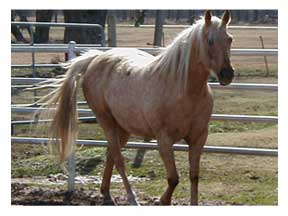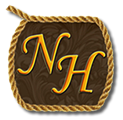The Effect of the Economy on My Horses
 The floundering economy has touched the horse industry in so many ways. My own personal concession is I had to sell one of my horses. I did this last November (before Iggette passed) to try to cut the rising cost of my board bill as well as the vet bill. I didn’t want to sell Princess (pictured) and it was a hard decsison to make. Actually I was supposed to sell one when I purchased my gelding over 2 years ago. I just didn’t ever get around to it. Quite honestly if we lived on our acreage instead of in town, I wouldn’t have sold her. But she has a very nice owner who decided to stay at the barn where I am, so I get to see her all the time. After Iggette passed away, I was left with 2 horses. Even with my board bill being reduced by 2 horses, the money crunch can still be felt. I have made some small adjustments in my horse keeping to save some money. Here are a few of the ways that I chosen to save money. Please keep in mind that my choices may not work for you. Make your decisions wisely.
The floundering economy has touched the horse industry in so many ways. My own personal concession is I had to sell one of my horses. I did this last November (before Iggette passed) to try to cut the rising cost of my board bill as well as the vet bill. I didn’t want to sell Princess (pictured) and it was a hard decsison to make. Actually I was supposed to sell one when I purchased my gelding over 2 years ago. I just didn’t ever get around to it. Quite honestly if we lived on our acreage instead of in town, I wouldn’t have sold her. But she has a very nice owner who decided to stay at the barn where I am, so I get to see her all the time. After Iggette passed away, I was left with 2 horses. Even with my board bill being reduced by 2 horses, the money crunch can still be felt. I have made some small adjustments in my horse keeping to save some money. Here are a few of the ways that I chosen to save money. Please keep in mind that my choices may not work for you. Make your decisions wisely.
1. My boarding has fluctuated over the years. For 4 horses, I changed all of them to pasture board only. After selling Princess & Iggette’s death, I changed my board to pasture with stall rights for inclement weather. This is cheaper than full board in a stall. Not all barns offer this option, but a good choice might be a paddock with a run-in shed.
2. My horses are school horses. I receive a small payment each time one of them is used for a lesson. This pays my farrier bill most of the time. There are times when it’s been too cold or too wet to have lessons. On those times, I have to supplement the difference from my pocket.
3. Since I don’t actively show or ride the trails, I have my farrier trim my horses hooves. I am lucky to have horses that have good feet and I’m a big believer in barefoot is better. Trimming costs less than shoeing your horse. This is a truly personal choice. You, with the help of your farrier & your vet, have to make your decision based on your horse’s needs.
4. I worm my horses myself. I use a paste wormer and shop around for sales. Sometimes I buy from the catalogs or on-line and sometimes I buy from the local co-op. When buying from the catalog or on-line, be sure to compare the cost + shipping versus the cost + local sales tax. You may be suprised how close these can turn out to be. Try to find free shipping specials.
5. I give my own shots. I have bought shots from both the local co-op & from my vet. If you don’t use the vet, make sure to tell his office what vaccinations you have given your horse. This is to keep your records up to date. I do not recommend this for the true novice. You need to be trained on how to give shots. Next time the vet is out, ask him to show you. Also, check to see what shots are recommended for your particular area.
6. If you have a trailer, haul your horse to the vet whenever possible. This saves the farm call. With the ever increasing fuel costs, the farm call fee is only going to go up. Keep in mind that some vets also charge a mileage fee as well as the farm call fee.
7. I have owned mares for years. I also don’t breed my mares. I don’t have the added costs of a pregnant mare or the cost of trying to raise a foal. There are just wwwaaayyyyyy to many horses out there to consider breeding for one. I can always find a good horse.
There are lots of ways you can cut your horse keeping costs. The one thing to remember is to keep your horse’s well being in mind.


